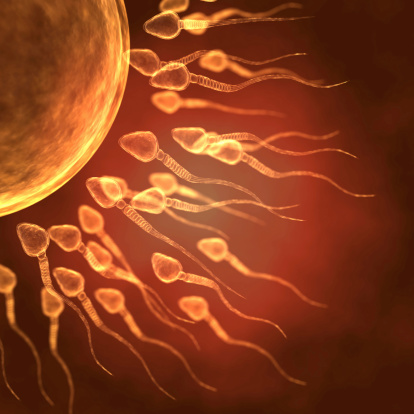 Sperm swimming to fertilize the egg. Sponges can reproduce sexually in addition to asexually. |

Water and tiny organisms enter through the ostia. The tiny organisms then get trapped and are digested by the collar cells.
Sponges also reproduce sexually without having to move. Click each row in the table to read about how animals in phylum Porifera reproduce sexually.
| Hermaphrodites | Sponges are hermaphrodites. This means that individual sponges can produce both types of gametes--eggs and sperm. Sponges are incapable of self-fertilization. Self-fertilization happens in hermaphroditic organisms, like plants, when the sperm of the same plant fertilizes the eggs in the same plant. Because the eggs and sperm in an individual sponge are produced at different times, they avoid self-fertilization. |
| Sperm Release | The sperm cells from one sponge are released and enter another sponge through the same openings that water and food enter through--ostia. |
| Egg Fertilization | Just like the choanocytes trap food, they also catch the sperm. The sperm then pass into the mesohyl, where the eggs are located. The sperm fertilizes the eggs. The eggs then grow into larvae, which are sponge zygotes. |
| Larvae | The free-swimming larvae then leave the sponge. This is the only time in a sponge's life that is capable of swimming. After this short-lived stage, the larvae attach themselves to a hard substance, like a rock or coral, to develop into a new sponges and live out the rest of their days in one place. |
In the activity below, put the following events in the order they happen when sponges reproduce sexually.
|
larval attachment
larval development
egg fertilization
sperm release
|
|
